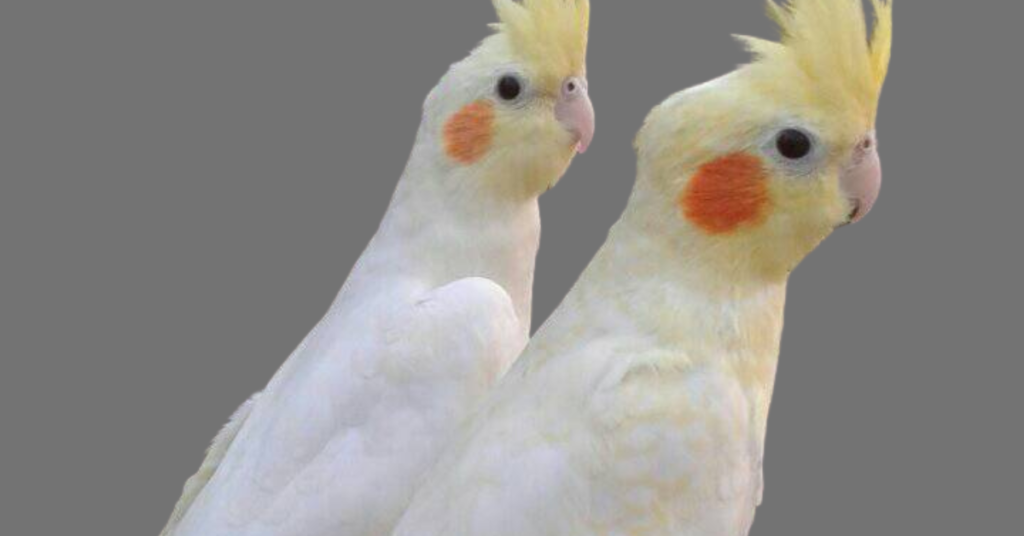Cockatiels are small, friendly, and colorful birds that are popular as pets. They are often chosen because of their playful nature and ability to mimic sounds. If you have a cockatiel or are thinking about getting one, you may want to know how to tell the difference between a male and a female. This can be important if you want to breed cockatiels or just want to know more about your pet. In this article, we will guide you through different ways to identify male and female cockatiels.
1. Physical Differences
One of the easiest ways to tell a male cockatiel from a female is by looking at their physical features. While both male and female cockatiels have similar body shapes and sizes, there are some noticeable differences.
Crest
The crest is the feathered part of a cockatiel’s head. Both male and female cockatiels have crests, but they behave and appear differently in males and females.
-
Male cockatiels: The crest of a male is usually more upright, standing up taller and sharper. When the male is excited or happy, the crest may stand higher.
-
Female cockatiels: The crest of a female is usually lower and flatter compared to the male’s. It may not stand up as high, and it tends to stay more relaxed.
Face Markings
The face markings are very important when it comes to identifying the gender of cockatiels.
-
Male cockatiels: Male cockatiels typically have bright, colorful cheek patches. These cheek patches are usually yellow or orange, depending on the color of the bird. The brighter and more vivid the cheek patch, the more likely the bird is male.
-
Female cockatiels: Female cockatiels generally have more muted or lighter cheek patches. These patches are often a pale yellow or sometimes grayish in color. They are less noticeable than the cheek patches of males.
Color and Plumage
The overall color of a cockatiel can also provide clues about its gender. However, this method might not be as reliable in all cockatiels, especially in those that are bred with mutations (such as albino or lutino cockatiels). Still, some general color patterns can help.
-
Male cockatiels: In most wild-type cockatiels, the male has brighter colors, especially in the body and the face. For example, the body is usually a brighter gray, and the yellow on the head and cheeks stands out more.
-
Female cockatiels: Female cockatiels often have more muted colors. Their body feathers might appear darker or have less vibrant shades of yellow and gray. The females’ colors are usually duller compared to the males.
Tail Feathers
Male and female cockatiels also differ in their tail feathers, especially when the bird is young.
-
Male cockatiels: Males have longer and more pointed tail feathers. They may also have a more defined tail pattern with stripes or a solid coloration.
-
Female cockatiels: Female cockatiels generally have shorter and more rounded tail feathers. Their tail feathers may not have as noticeable markings or could be more uniform in color.
2. Behavioral Differences
Another way to tell male from female cockatiels is by observing their behavior. Cockatiels are social birds, and their behavior can give you clues about their gender.
Mating Behavior
-
Male cockatiels: Male cockatiels are usually more vocal and active when they are courting or trying to attract a mate. They may whistle, sing, or even perform a dance by bobbing their head and flicking their crest. If you see your cockatiel doing these behaviors, it is most likely a male.
-
Female cockatiels: Female cockatiels are typically quieter and less showy than males. While they may still whistle or chirp, they do not engage in the same elaborate courtship displays. A female might also respond to a male’s singing by performing some mating behavior, but she won’t initiate it as often as the male does.
Aggression and Territorial Behavior
-
Male cockatiels: Males tend to be more territorial and protective of their space. If there is a new bird or a change in their environment, male cockatiels might act more aggressively to defend their area.
-
Female cockatiels: Female cockatiels are usually less territorial and aggressive compared to males. They may also become protective when nesting or if they are about to lay eggs, but this behavior is less common in non-breeding females.
Vocalization
Vocalization is one of the easiest ways to tell the difference between male and female cockatiels.
-
Male cockatiels: Male cockatiels are famous for their ability to whistle and mimic sounds. They are more likely to make a variety of sounds, such as whistles, songs, and even mimicry of human speech. If your cockatiel is very vocal and loves to sing, it is most likely a male.
-
Female cockatiels: Female cockatiels tend to be less vocal than males. They do not whistle or sing as much, and their sounds are often simpler. However, they might still chirp or make other vocalizations, but the variety and complexity of sounds will be less than a male’s.
3. DNA Testing
If you are still not sure whether your cockatiel is male or female, there is another reliable way to tell: DNA testing. This test involves taking a small blood sample or a feather from the bird and sending it to a laboratory. The lab can then test the DNA and tell you whether the cockatiel is male or female. DNA testing is the most accurate method for identifying the sex of your cockatiel.
4. Age and Development
When cockatiels are very young, it can be hard to tell their gender. As the birds mature, their physical features and behavior will become more distinct. By the time a cockatiel is about 6 to 9 months old, you will start noticing the differences in their color, markings, and behavior.
5. Breeding Differences
If you have both a male and a female cockatiel and are thinking about breeding them, there are some additional signs to watch for during the breeding season.
-
Male cockatiels: Male cockatiels will start to exhibit more courtship behavior, such as singing and dancing. They might also begin to bond more closely with the female.
-
Female cockatiels: Female cockatiels may start to show interest in nesting. They will seek out nesting spots and might even lay eggs if they feel ready. If you find eggs in your cockatiel’s cage, you most likely have a female.
6. Conclusion
In conclusion, identifying the sex of a cockatiel can be done by observing their physical features, behaviors, and vocalizations. Males tend to be more colorful, vocal, and active, while females are usually quieter, more reserved, and have less vibrant coloring. If you’re still unsure, DNA testing can give you a definite answer.
Understanding the gender of your cockatiel is important for their care, whether you want to breed them or simply understand their needs. Observing your cockatiel’s behavior and physical features closely over time will help you become more confident in identifying whether your bird is male or female.
By paying attention to their crest, cheek patches, tail feathers, and vocalizations, you’ll be able to distinguish between a male and a female cockatiel with ease.

